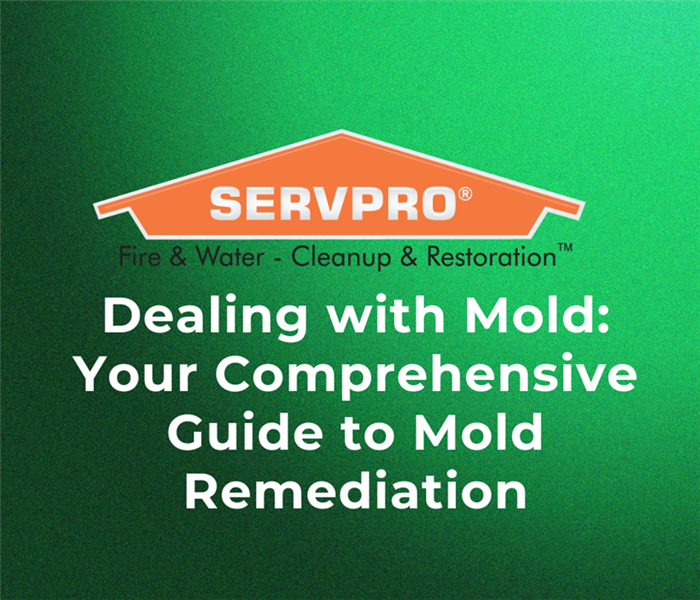Dealing with Mold: Your Comprehensive Guide to Mold Remediation
9/6/2023 (Permalink)
 Dealing with mold can be a daunting task, but with the right knowledge and precautions, you can effectively address the issue and protect your home
Dealing with mold can be a daunting task, but with the right knowledge and precautions, you can effectively address the issue and protect your home
Mold thrives in damp, dark, and humid environments, making basements, bathrooms, and kitchens susceptible areas. Not only is mold unsightly, but it can also pose health risks if left unaddressed. Here is what to do if you discover mold in your home and how to effectively tackle this issue.
- Identify the Mold: Before you can effectively deal with mold, you need to identify the type and extent of the infestation. There are various types of mold, with some being more harmful than others. Common indoor molds include black mold (Stachybotrys chartarum), green mold (Aspergillus), and white mold (Penicillium). If you are unsure about the type of mold you are dealing with, consider hiring a professional mold inspector who can provide an accurate assessment.
- Safety First: When dealing with mold, safety should be your top priority. Mold can release harmful spores and mycotoxins into the air, which can be dangerous when inhaled. To protect yourself, follow these safety precautions:
- Wear protective gear, including an N95 respirator, gloves, and eye protection.
- Isolate the contaminated area to prevent mold spores from spreading to other parts of your home.
- Ensure proper ventilation by opening windows and doors to allow fresh air to circulate.
- Remove Moisture Sources: Mold thrives in moist environments, so the first step in mold remediation is to identify and eliminate the source of moisture. Fix any leaks, repair roof damage, and improve ventilation in damp areas like basements and bathrooms. A dehumidifier can also help reduce humidity levels in your home.
- Cleaning and Mold Removal: The method of mold removal depends on the extent of the infestation and the affected materials. Here are some general steps to follow:
- For small surface mold growth, clean the affected area with a mixture of soap and water or a commercial mold cleaner.
- For larger infestations, you may need to remove and replace contaminated materials, such as drywall, insulation, or carpet. Be cautious not to disturb the mold, as this can release more spores into the air.
- Consider Professional Help: If the mold problem is extensive, toxic mold is suspected, or you have health concerns, it's advisable to hire a professional mold remediation service. These experts have the necessary equipment and expertise to safely and effectively remove mold from your home.
After you have successfully removed the mold, take steps to prevent it from returning:
- Maintain proper ventilation and humidity levels in your home.
- Regularly inspect and repair any leaks or water damage.
- Clean and dry damp areas promptly.
- Use mold-resistant materials in areas prone to moisture.
Dealing with mold can be a daunting task, but with the right knowledge and precautions, you can effectively address the issue and protect your home and health. Remember that safety should always come first, and when in doubt, seek professional assistance. By identifying and addressing the source of the problem and following proper remediation procedures, you can create a healthier living environment for you and your family.
SERVPRO Of Newton Wellesley is The #1 Choice in Cleanup and Restoration for residential and commercial buildings’ fire, mold, water, and storm damage. If you are looking for assistance, just click on the contact us page, and someone will be in touch shortly.






 24/7 Emergency Service
24/7 Emergency Service